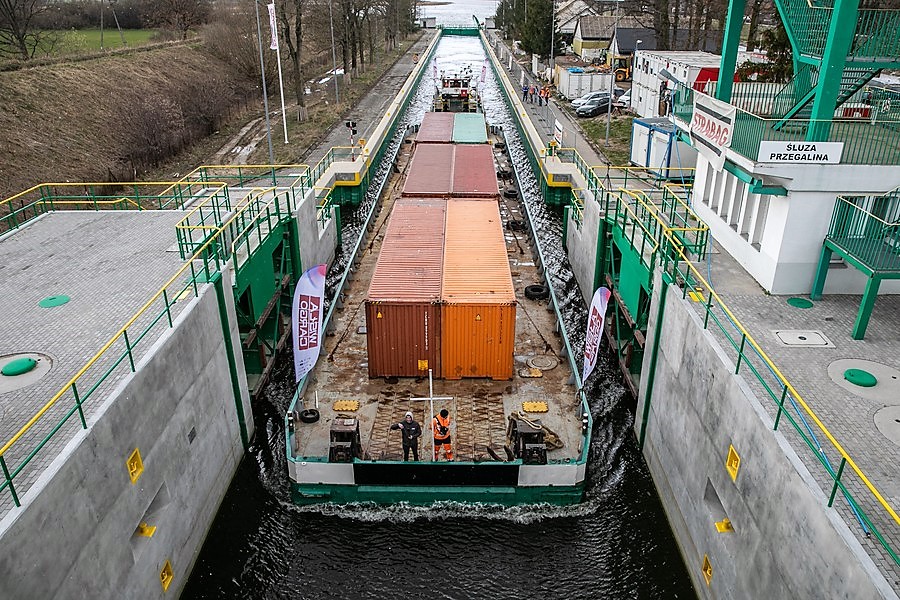Poland is for the first time transporting commercial shipping containers by barge along its longest and largest river, the Vistula. If the pilot scheme is successful, it is hoped that the method can provide a cost-effective and environmentally friendlier means of moving goods.
Yesterday, a boat set out from Gdańsk – Poland’s largest port, located on the northern Baltic coast – pushing a barge loaded with six 40-foot containers weighing a total of 150 tonnes. It is expected to reach the town of Chełmno, around 170 kilometres upstream, on Thursday.
There it will unload supplies for Swedish furniture giant IKEA and for TZMO, a hygienic and cosmetic products company. The barge will then return back north to Gdańsk with a new load of finished products from TZMO on 9 April.
The journey is part of a pilot project by the local authorities in the Kujawsko-Pomorskie province, who hope to promote in-land water transport as a fast, economical and more environmentally friendly method of moving cargo.
A standard river shipment can carry as much load as 84 trucks and is almost four times more energy efficient, according to data from the provincial office. A single boat leaving Gdańsk each day could reduce the number of trucks on Polish roads by 15,000 each year.
“We are particularly interested in activities aimed at revitalising the lower Vistula and activating its economic potential while respecting the natural environment,” said Piotr Całbecki, the head of the provincial government.
The transport is part of the international EMMA Extension programme promoting sea and river freight in the Baltic Sea region.
It is being accompanied by researchers from the Regional Water Management Authority in Gdańsk, who will be taking measurements in the waterways during the journey. They will check navigational markings and the capacity of the waterways, as well as note any difficulties faced by the transport.
The part of the Vistula river flowing in the Kujawsko-Pomorskie province spans 205 kilometres of waterways and passes through 11 cities and towns with a total population of 850,000 people.
Main image credit: Andrzej Goiński / UMWKP

Maria Wilczek is deputy editor of Notes from Poland. She is a regular writer for The Times, The Economist and Al Jazeera English, and has also featured in Foreign Policy, Politico Europe, The Spectator and Gazeta Wyborcza.




















